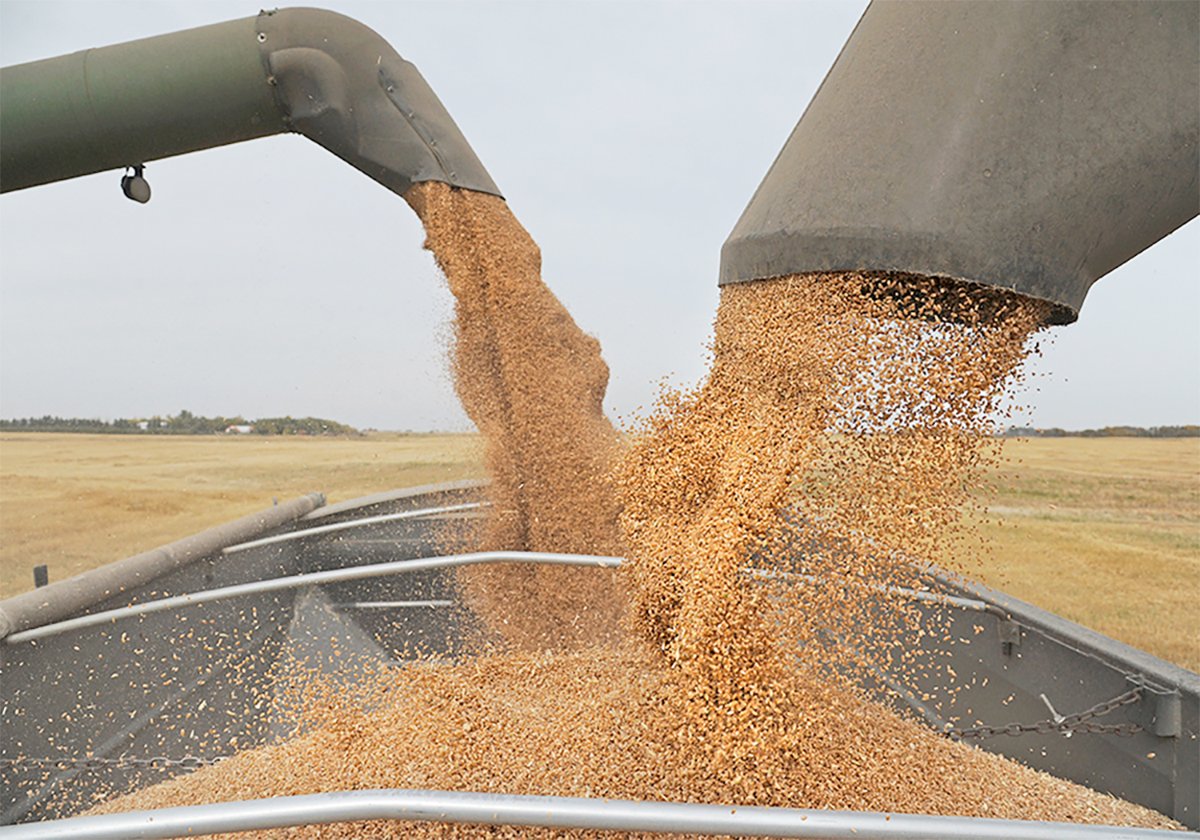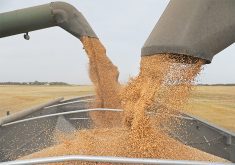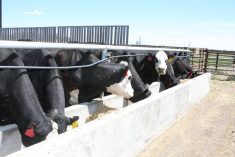WHERE ARE MY RIGHTS?
Re: Story by Brian Cross, WP Nov. 21, “PBR rules undergo federal review.”
Take a very close look at what federal agriculture minister (Gerry) Ritz states: “… will be at industry’s direction.” That tells it all.
He has never been interested in the agriculture of this country. He and his cohorts ran roughshod over us, the farmers, with the demise of the Canadian Wheat Board and further along now see fit to extend plant breeders’ rights into my farm-produced grains in my grain bins. Just exactly where are my rights?
Read Also

Agriculture productivity can be increased with little or no cost
There’s a way to enhance agricultural productivity with little or no cost. It doesn’t even require a bunch of legislative changes.
Plant breeders are allowed to trespass upon my farm after I have planted PBR seed in the spring, paid all the inputs, including insurance, and suddenly after harvest of my crop a PBR representative has the right to trespass upon my property again without compensation.
Mr. Ritz, our industry minister, only listens to one very single side of the equation. It has become so out of balance. I just have to ask who exactly gave away plant breeders’ rights and did the plant breeders ever pay the farmers that they obtained their various start seeds (from) plant breeders’ rights to get the material?
Plants upon this world were placed here for all, and suddenly some plant breeder wants rights on an ever-escalating scale.
I strongly feel that once I have loaded the seed and paid all the plant breeders charges upon that load, that that grain is now mine to plant, protect through the growing season, store and sell into the market and clean for use the following years.
If the plant breeders would cover all my production costs 24/7/365, plus my living expenses, it would be a whole different story.
Continuing along the ever-escalating plant breeders’ rights will only result in farmers having to go to a food bank each day to feed his family. The B.C. comic strip had it right when it gave the definition of a farmer as “someone who is asked to feed the world in exchange for enough money to starve his family.”
Delwyn J.J. Jansen,
GMO DEBATE NEEDED
In reading Cami Ryan’s comments in “No room in science for provocateurs,” one of the few areas I can agree with is in her choice of title for the article. It is also true that one has to be careful what science leads your decision making process, especially with the internet as a source.
I am but a conventional farmer, but even I have noticed (that) other obviously pro-GM supporters aggressively try to paint other science that doesn’t agree with their own as “junk science” managed with poor standards and guidelines.
Ryan berates some of the science she holds in contempt by pointing out that the science is not transparent because of non-disclosure demands by the authors.
It could be suggested that the holders of the GM seed patents also practice a form of non-disclosure with the prohibition of anyone conducting research or comparisons with their seeds.
These are the same companies that recently spent millions of dollars on campaigns to influence consumer votes in two U.S. states to prevent a bill’s passage that would have forced food manufacturers to disclose if their product had GM origins.
This was done despite polls that showed an overwhelming consumer desire to have labelling so they can make their own choices.
Ryan suggests it is a fact that people are not suffering even a stomach ache after consuming three trillion servings of GM food.
If Ryan is to uphold several of her own strict guidelines, then where did she gain reference of material to substantiate her claim? It could not be in North America since we do not have the food labelling to ensure the purity of food consumption in order to evaluate data of GMO against non GMO consumer health….
We are starting into our long winter. It’s the perfect time for one of our ag seminars across the Prairies to bring together researchers from both pro-GMO and non-GMO to sit across from each other at the same table.
For this debate I suggest GMO-concerned scientists such as Dr. Seneff, senior researcher at MIT,, Dr. Thierry Vrain, former research scientist from Ag Canada whose job used to be promotion of GMOs, and Dr. Don Huber, plant pathologist.
On the other side we could invite Ryan and some equal associates. What do you say, Ms. Ryan? Some would say this is a chance to “put your money where your mouth is.”
Reed Wolfe,
FUND RESEARCH PROPERLY
Re: Upcoming wheat and barley commission elections.
Cherilyn Jolly-Nagel, along with her tiny following of western Canadian wheat/barley grower members, hope to dip into farmers’ pockets for so-called wheat and barley research if they are elected in the upcoming wheat and barley commission elections.
Farmers had all the tools and knowledge under the single desk CWB for marketing grain. The CWB collected the research money on behalf of farmers and sent it to the Western Grains Research Fund, all for the benefit of farmers.
… Now under this new system farmers will have to pay for staff and research on both marketing and variety development. Farmers will pay more. We know many of Jolly-Nagel followers favour the canola model of giving all of the research we pay for to the private seed companies along with exclusive rights to control the seed. Farmers pay to develop it and pay to use it.
We had a proper funding model where government, farmers and universities all contributed to public plant breeding in the public interest.
Producers are not the only ones to receive benefits from research on new varieties. There are benefits for the whole society, benefits like high quality food production. Consumption and sale of these products benefits the nation, and the federal government should not be downloading costs of this research directly onto producers.
Under the model favoured by Ottawa, consumers and seed companies get a free ride paid for by farmers. A properly funded research model should receive funding from consumers and producers. Mere pennies a product from consumers would provide the research into foods that other countries enjoy. That is the job for government, which Ottawa is running away from.
Eric Sagan,
Melville, Sask.
TEMPERATURE RISING
Is “climate change” real? Or is it, as some would have us believe, due to unusual fiery sunspots?
During the span of the previous 800,000 years of the planet Earth, the parts per million of carbon dioxide has never exceeded 300 p.p.m.
According to research by the U.S. government’s National Oceanic and Atmospheric Administration, the concentration of carbon dioxide in the Earth’s atmosphere has reached 400 p.p.m. This was established in May 2013 during a one-week period in Hawaii. What is remarkable about the increase of the 100 p.p.m. is that it took place during the last 100 years.
The majority of global scientists predict that a further increase in the Earth’s temperature will intensify the occurrence and ferocity of storms that we have just witnessed in the Philippines, where millions of people have lost everything, including their homes, and thousands have died, being crushed by building collapse and tsunami-like crests of water.
In general, global scientists have accepted the fact that the rise in the Earth’s temperature is due to the ever-increasing use of fossil fuels.
It is estimated that projected production of the oilsands in Canada by the year 2022 will use up the equivalent of 300 Olympic pools of water each and every day. Tailing lakes created to store the toxic waste caused by processing the oilsands presently already cover over 150 sq. kilometres of Alberta’s landmass, mostly in the northern areas of the province.
Ten years from now, the projected oilsands process will yield an amount of toxic tailings that would fill the pool at the West Edmonton Mall — the largest in the world — 30 times each day. Eliminating the tree growth to access the oilsands would on a daily basis increase as much greenhouse gas in the atmosphere as 22 million cars per day on our roads.
Leo Kurtenbach,
Saskatoon, Sask.














